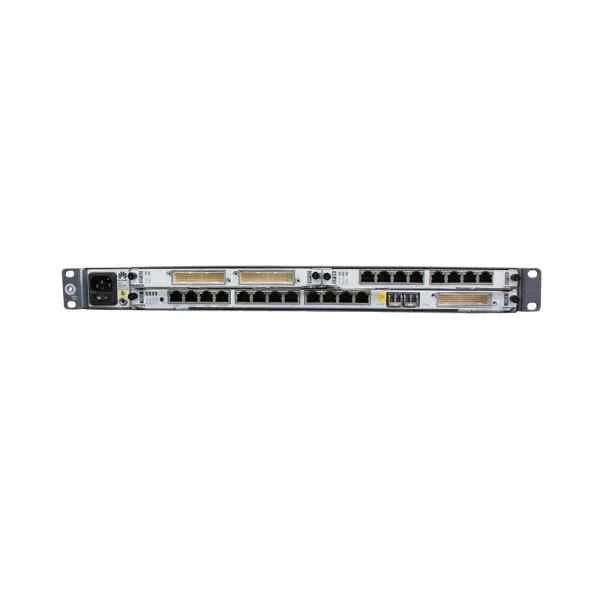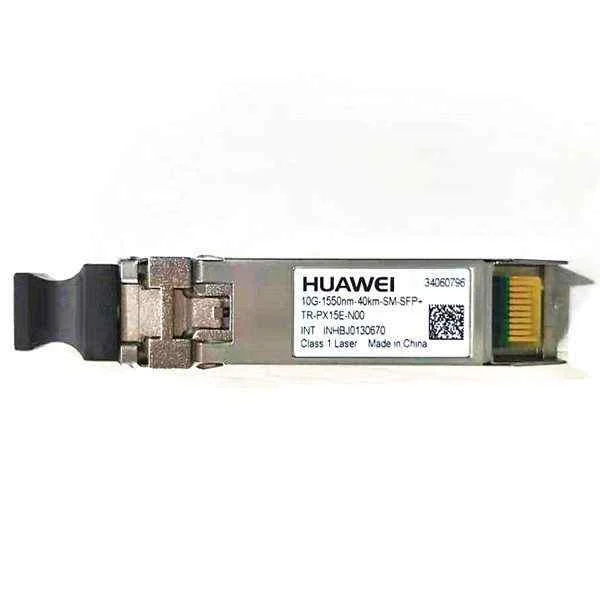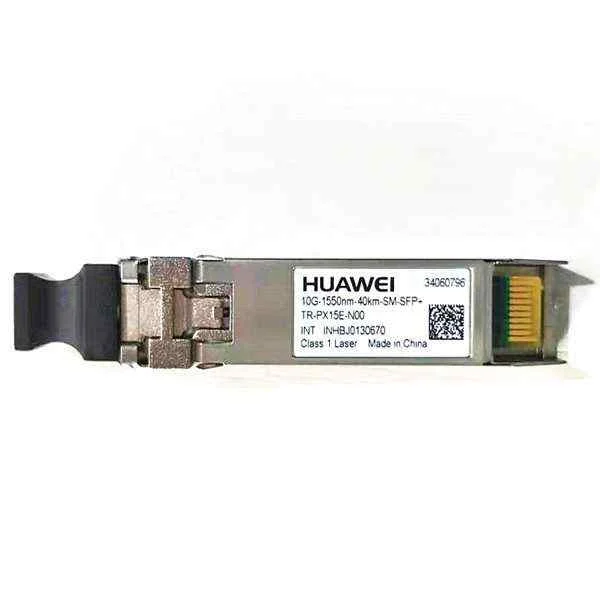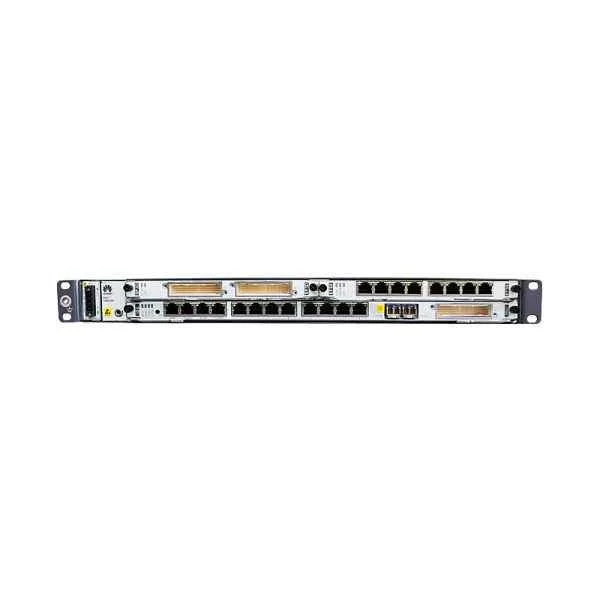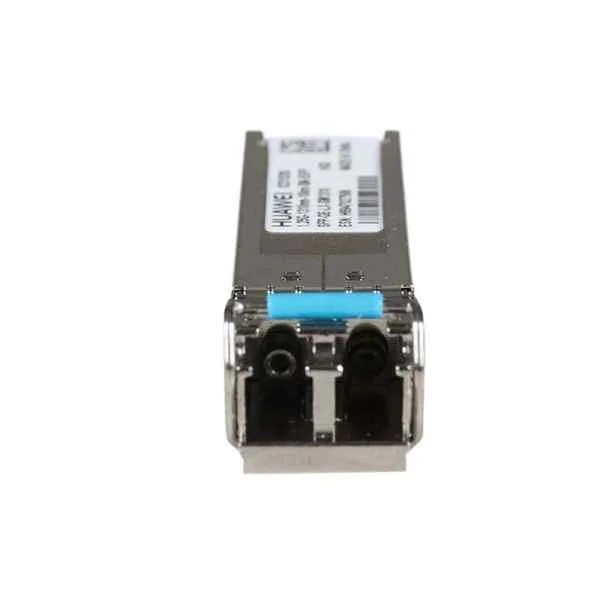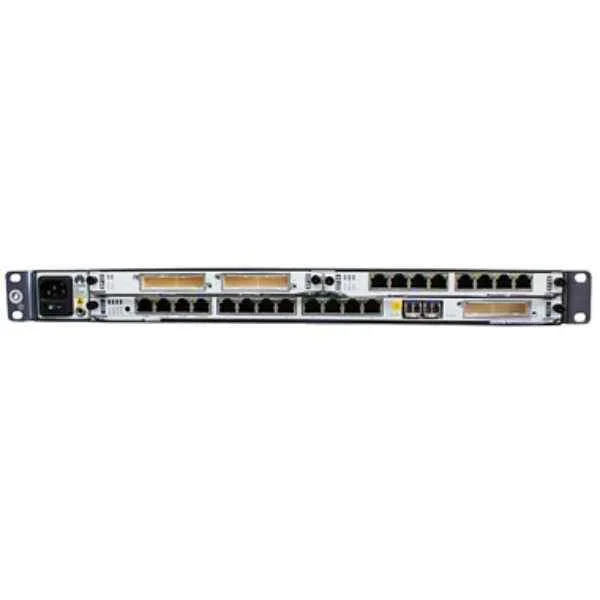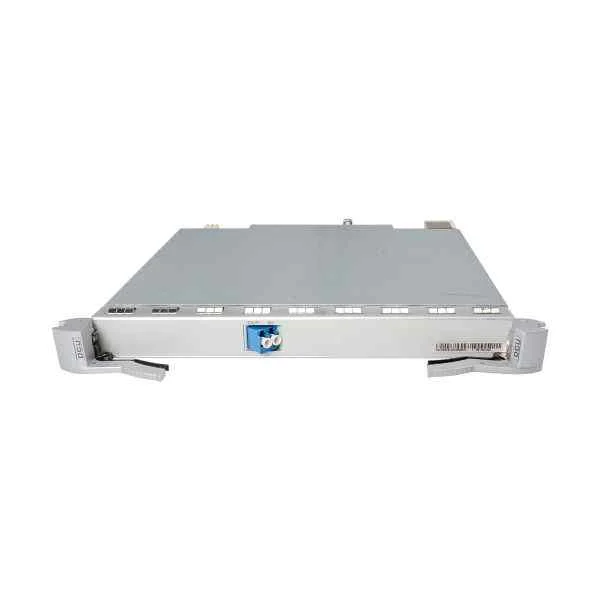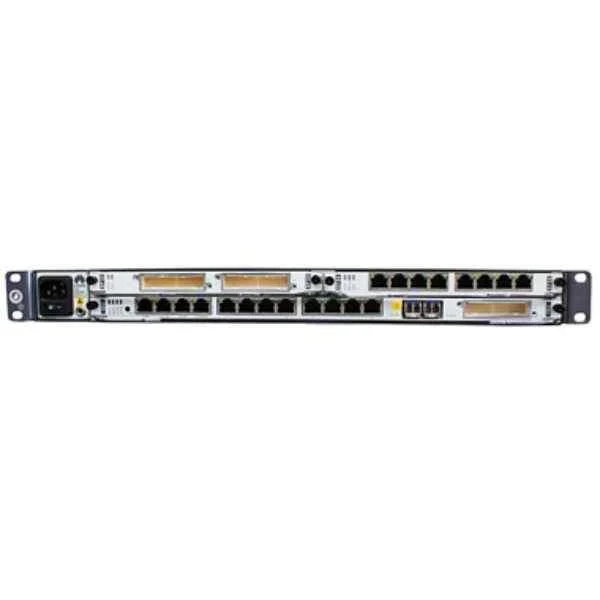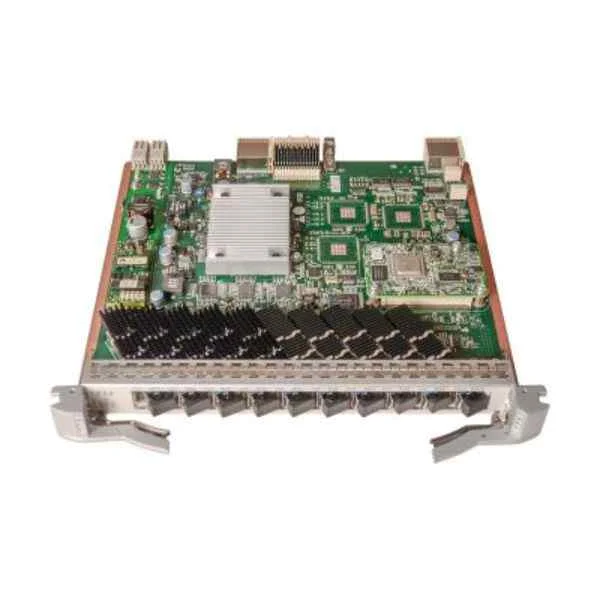-
- Routers
- Switches
- Firewalls
- Wireless
- Transceivers
- Network Adapters
- Network Modules and Cards
- Network Equipment
- Motherboards
- Computer Memory & RAM
- Power Supplies
- CPUs and Processors
- Server Hard Drives
- Server Memory and Flash
- Desktop Computers
- Laptops
- Workstations
- Servers
- Notebooks
- Portable Computing Devices
- Memory and Flash
- Data Tapes
- Hard Drives & SSDs
- Storage
- Network Cameras
- Surveillance & Security Equipment
- Security Cameras
- Video Intercom Systems
- Access Control Systems
- Digital Video Recorders
- IP Cameras
- IT Accessories
- IP Phones
- UC Solutions
- Video Conferencing
- Software Licenses
- Business Applications
- Audio Equipment
-
- By Brands
- Ubiquiti Switches
- Huawei Switches
- Fortinet Switches
- Cisco Switches
- Zyxel Networks Switch
- HPE Switches
- Dell Switches
- Juniper Switches
- Ruckus Switches
- D-Link Switches
- By Brands
- Ubiquiti Wireless
- Fortinet FortiAP Wireless Access Point
- Cisco Wireless LAN
- HPE Access Points
- Huawei Wireless APs
- Ruckus Wireless APs
- Ruckus WLAN Controller
- D-Link Wireless
- By Brands
- Apple Adapters
- Intel Adapters
- By Brands
- H3C Other Products
- Inspur Networking Products
- Fortinet Network Security Platforms
- Fortinet Others
- Dahua Transmission
- HPE Controllers
- APC Network Equipment
- Cisco SMB Products
- Synology Network Equipment
- Asus Network Equipment
- Fujitsu Network Equipment
- Extreme Network Network Equipment
- Brocade Network Equipment
- HP Network Equipment
- TP-Link Network Components
- Juniper Mist Products
- Juniper Product Bundles
- By Brands
- Cisco Power Supplies
- By Brands
- Lenovo Processors
- By Brands
- Dell Desktops
- By Brands
- Dell Laptops
- By Brands
- Cisco Memory & Flash
- By Brands
- DLT Data Tape
- LTO Data Tape
- SLR / MLR Data Tape
- QIC Data Tape
- Super DLT Data Tape
- 3480 & 3490 Data Tape
- 4mm DDS Data Tape
- 3590 "J" and "K" Data Tape
- 3592 Data Tape
- 9840 & 9940 Data Tape
- 8mm VXA Data Tape
- 3570 Magstar Data Tape
- By Brands
- Uniview HDD
- Lenovo Hard Drives
- By Brands
- Huawei Storage System
- Dahua Storages
- Intel Storage
- HP Storage Devices
- HPE Storages
- Dell Storages
- By Brands
- Hikvision Network Cameras
- By Brands
- Uniview NVR (Prime.Pro)
- Hikvision Alarm Products
- Hikvision HiLook Products
- Hikvision Intelligent Traffic Products
- Hikvision Network Video Recorders
- Hikvision Other Products
- Hikvision PTZ
- Hikvision Thermal Cameras
- Hikvision Turbo HD Cameras
- Dahua Alarms
- Dahua CVI
- Dahua Mobile & Traffic
- Dahua NVR
- Dahua Other Products
- Dahua Project Exclusive Products
- Dahua XVR
- Zyxel Networks Security
- Juniper Security
- Huawei Video Surveillance
- By Brands
- Hikvision Transmission and Display Products
- Hikvision Video Intercom
- Dahua Video Intercoms
- By Brands
- Hikvision Access Control
- Dahua Access Control
- By Brands
- Hikvision Digital Video Recorders
- Dahua DVR
- By Brands
- Poly Accessories
- Lenovo Accessories
- Fortinet Accessories and Transceiver
- Apple Accessories
- Apple Peripherals
- Intel Accessories
- APC Accessories
- AMD PC Components
- Synology PC Components
- Asus Accessories
- Asus PC Components
- Broadcom Accessories
- Broadcom PC Components
- Fujitsu Accessories
- Fujitsu PC Components
- Fujitsu Peripheral Devices
- Extreme Network Accessories
- Logitech Accessories
- Logitech Peripheral Devices
- Brocade Accessories
- Brocade PC Components
- HP Accessories
- HP PC Components
- HP Peripheral Devices
- Jabra Accessories
- Jabra Peripheral Devices
- TP-Link Accessories
- Cisco Accessories
- HPE Accessories
- Dell Accessories
- Huawei Accessories
- By Brands
- Poly Phones
- Cisco IP Phones
- By Brands
- Logitech Audio Equipment
-
- By Series
- Industrial Routers
- AR100 Series Enterprise Routers
- AR120 Series Enterprise Routers
- AR1200 Series Enterprise Routers
- AR150 Series Enterprise Routers
- AR160 Series Enterprise Routers
- AR200 Series Enterprise Routers
- AR2200 Series Enterprise Routers
- AR3200 Series Enterprise Routers
- AR3600 Series Enterprise Routers
- AR530 Series Agile Gateways
- AR6000 Series Enterprise Routers
- Huawei AR550 Series Agile Gateways
- Huawei Multi-Service Control Gateways
- Huawei NetEngine Series Routers
- By Series
- Router ISR 4000
- Router ISR 3800
-
Router ISR 1800

-
Router ISR 1900

- Router ISR 2900
- Router ISR 3900
-
Router ISR 1100

- Router ISR 800
-
Router ASR 1000

- Router ASR 9000
- Router 7200 Series
- Router ISR 2800
- Cisco 8000 Series Routers
- Cisco Catalyst 8300 Series Edge Platforms
- Cisco Catalyst 8500 Series Edge Platforms
- Cisco Router 10000 Series
- Cisco Router 12000 Series
- Cisco Industrial Routers
- Cisco Router ASR 900
- Cisco Router ASR 5000
- Cisco Router ISR 900
- Routers 7600 Series
- By Series
- HP MSR20 Series
- HP MSR20-1x Series
- HP MSR30 Series
- HP MSR50 Series
- HP MSR93x Router Series
- HP MSR95x Router Series
- HP MSR900 Series
- HP MSR1000 Router Series
- HP MSR2000 Router Series
- HP MSR3000 Router Series
- HP MSR4000 Router Series
- By Series
- Juniper CTP150 & CTP2000 Platforms
- Juniper MX10003/MX10008/MX10016 Routers
- Juniper MX2020 5G Universal Routing Platforms
- Juniper MX204/MX240/MX480 Routers
- Juniper MX960 5G Universal Routing Platforms
- Juniper Other Routers
- Juniper PTX1000/3000/5000/10000 Routers
- Juniper Router Accessories
- Juniper Router Licenses
- Juniper Router Modules & Cards
- Juniper Routers Services
- By Series
- D-Link Intent-Driven Gateways
- D-Link Mini Routing Strips
- D-Link Router Accessories
- D-Link Smart Routers
- By Series
- Ubiquiti Enterprise Switches
- By Series
- Huawei Data Center Switches
- Huawei S12700 Series Switches
- Huawei S1700 Series Switches
- Huawei S2300 Series Switches
- Huawei S2700 Series Switches
- Huawei S3300 Series Switches
- Huawei S3700 Series Switches
- Huawei S5300 Series Switches
- Huawei S5700 Series Switches
- Huawei S6300 Series Switches
- Huawei S6700 Series Switches
- Huawei S7700 Series Switches
- Huawei S9300 Series Switches
- Huawei S9700 Series Switches
- By Series
- Fortinet FortiSwitch 100 Series Entry Switches
- Fortinet FortiSwitch 200 Series Mid-Range Switches
- By Series
- Nexus 3000 Switches
- Cisco Catalyst 3650 Switches
- Catalyst 9600 Switches
- Catalyst 6500 Switches
- Nexus 2000 Switches
- Nexus 5000 Switches
- Nexus 7000 Switches
- Nexus 9000 Switches
- Cisco Catalyst Compact Switch
- Cisco Catalyst IE3000 Rugged Switches
- Cisco Industrial Ethernet 1000 Switches
- Cisco Industrial Ethernet 2000 Switches
- Cisco Industrial Ethernet 3000 Switches
- Cisco Industrial Ethernet 4000 Switches
- Cisco Industrial Ethernet 5000 Switches
- Cisco Switch Catalyst 1000
- Cisco Switch Catalyst 6800
-
Catalyst 3850 Switches

-
Catalyst 2960 Switches

- Catalyst 3750 Switches
- Catalyst 3560 Switches
-
Cisco Catalyst 9200 Switches

- Catalyst 9400 Switches
- Catalyst 9500 Switches
-
Catalyst 9300 Switches

- Catalyst 4500 Switches
- Catalyst 4900 Switches
- By Series
- Web managed Switches
- 10G Smart Cloud Switches
- By Series
- Dell KVM Switches
- Dell Networking N1000 Switches
- Dell Networking N1500 Switches
- Dell Networking N2000 Switches
- Dell Networking N3000 Switches
- Dell Networking N4000 Switches
- Dell Networking S3000-ON Switches
- Dell Networking S4048-ON Switches
- Dell Networking S4100-ON Switches
- Dell Networking X Series Switches
- By Series
- Juniper EX2300 Series Ethernet Switches
- Juniper EX3300 Series Ethernet Switches
- Juniper EX3400 Series Ethernet Switches
- Juniper EX4300 Series Ethernet Switches
- Juniper EX4600 Series Ethernet Switches
- Juniper QFX3000 Series Switches
- Juniper QFX5100 Series Switches
- Juniper QFX5200 Series Switches
- Juniper Switch Accessories
- Juniper Switch Licenses
- Juniper Switch Modules & Cards
- By Series
- D-Link Access Switches
- D-Link Add Points Switches
- D-Link Aggregation Switches
- D-Link Core Switches Series
- D-Link Data Center Switches
- D-Link Fully Managed Switches
- D-Link Industrial Switches
- D-Link Intelligent Network Management Switches
- D-Link Smart Switches
- D-Link Switch Accessories
- D-Link Unmanaged Switches
- D-Link Wired Network Cards
- By Series
- Cisco ASA 5500 Series
- Cisco Firepower 2000 Series Appliances
- Cisco FirePOWER 7000 Series Appliances
- ASA 5500 Series Business Edition Bundles
- Cisco ASA with FirePOWER Services
- By Series
- Huawei Application Security Gateways
- Huawei Data Center Firewalls
- Huawei DDoS Protection Systems
- Huawei Next-Generation Firewalls
- Huawei Security Platforms
- By Series
- Ubiquiti Antennas
- Ubiquiti AP and Bridge Accessories
- Ubiquiti Ceiling Access Points
- Ubiquiti Outdoor Access Points
- Ubiquiti Panel Access Points
- Ubiquiti Wireless Bridges
- By Series
- Fortinet FortiAP Access Points
- By Series
- 1540 Series Outdoor Access Points
- 1560 Series Outdoor Access Points
- 1600 Series Access Points
- 1700 Series Access Points
- 1810 Series Access Points
- 1815 Series Access Points
- 1830 Series Access Points
- 1850 Series Access Points
- 2600 Series Access Points
- 2700 Series Access Points
- 2800 Series Access Points
- 3700 Series Access Points
- 3800 Series Access Points
- Industrial Access Points
- 1570 Series Outdoor Access Points
- Cisco Antenna 2.4 GHz & 5 GHz
- WLAN Controller: 2500 Series
- WLAN Controller: 3500 Series
- WLAN Controller: 5500 Series
- 1530 Series Outdoor Access Points
- AP and Bridge Accessories
- Cisco 1040 Access Point
- Cisco 1130 Access Point
- Cisco 1140 Access Point
- Cisco 1240 Access Point
- Cisco 1250 Access Point
- Cisco 1260 Access Point
- Cisco 1310 Access Point Bridge
- Cisco 1410 Series Bridge
- Cisco 1520 Mesh Access Point
- Cisco 1550 Access Point
- Cisco 1810W Access Point
- Cisco 1840 Access Points
- Cisco 3500 Access Point
- Cisco 3600 Access Point
- Cisco 4800 Access Point
- Cisco 521 Access Point
- Cisco 600 Access Point
- Cisco Catalyst 9100 WiFi 6 Access Point
- Cisco Catalyst IW6300 Series Heavy Duty Access Points
- Cisco WLAN Controller
- By Series
- Huawei Indoor Access Points
- Huawei Outdoor Access Points
- Huawei Scenario-Specific Series
- Huawei Wireless Access Controllers
- By Series
- D-Link Ceiling Access Points
- D-Link Desktop Access Points
- D-Link Enterprise Indoor Access Point
- D-Link Panel Access Points
- D-Link Private Cloud Access Points
- D-Link Wireless AP Accessories
- By Series
- Cisco 100G Optical Modules
- Cisco 25G Optical Modules
- Cisco 400G Optical Modules
- Cisco 40G Optical Modules
- Cisco OADM EWDM Module
- Cisco ONS Transceivers
- Cisco SFP GLC Module
- Cisco X2 Module
- Cisco XENPAK Module
- Cisco XFP Module
- Cisco GBIC Module
- 40G Base Modules
- 10G Base Modules
- SFP for 3000 Series
- SFP+ for 3000 Series
- SFP
- SFP+
- By Series
- Cisco Compatibles
- HPE Compatibles
- Dell Compatibles
- Juniper Compatibles
- Brocade Compatibles
- Avaya Compatibles
- Ubiquiti Compatibles
- Nokia Compatibles
- NetApp Compatibles
- By Series
- Memory Adapters
- Network Adapters
- By Series
- Memory Adapters
- Storage Adapters
- Network Adapters
- By Series
- Huawei Firewall Security Modules
- Huawei PCIe SSD Cards
- Huawei Router Modules & Cards
- Huawei Server PCIE Cards
- Huawei Switch Module & Cards
- By Series
- Cisco Wireless Services Module
- Cisco Catalyst 3850 Network Module
- Cisco Catalyst 3750 Network Module
- Cisco Catalyst 3560 Network Module
- Cisco Catalyst Stack Kits & Stack Modules
- Cisco 4500 Switch Modules
- Cisco 6500 Switch Modules
- Cisco 6800 Switch Modules
- Cisco 7200 Modules
- Router AIM Modules
- Router EHWIC WAN Cards
- Router ISR G2 SM ISM Modules
- Router VWIC2 VWIC3 Cards
- Router WIC WAN Cards
- VIC VIC2 VIC3 Voice Cards
- Cisco ASR 1000 Router Modules & Interfaces
- Cisco Catalyst 9000 Switch Modules
- Cisco Controller Modules
- Cisco Firewalls Modules & Cards
- PVDM Voice/FAX Modules
- Cisco Nexus 3000 Switch Modules & Cards
- Cisco Nexus 5000 Switch Modules
- Cisco Nexus 7000 Switch Modules & Cards
- Cisco Nexus 9000 Switch Modules & Cards
- NM NME EM Network Modules
- Cisco 7600 Modules
- Cisco ISR 4000 Router Modules & Cards
- Cisco 8000 Series Routers Modules & Cards
- Cisco Catalyst 8000 Series Edge Platforms Modules & Cards
- Cisco IE Switch Modules & Cards
- By Series
- Inspur Switches
- By Series
- Fortinet FortiGate NGFW Entry-level Series
- Fortinet FortiGate NGFW High-end Series
- Fortinet FortiGate NGFW Middle-range Series
- Fortinet FortiGate Rugged Series
- Fortinet FortiGate/FortiWiFi Series
- Fortinet NGFW Licenses
- By Series
- Fortinet FortiSandbox Advanced Threat Prevention Systems
- Fortinet FortiAuthenticator User Identity Management Servers
- Fortinet FortiManager Centralized Management Platforms
- Fortinet FortiNAC Network Access Control Solutions
- Fortinet FortiSIEM Unified Event Correlation and Risk Management Solutions
- By Series
- Dahua Access Switches
- Dahua Aggregation Switches
- Dahua Core Switches
- Dahua PoE Switches
- Dahua Transmission Accessories
- Dahua Wireless Devices
- By Series
- HPE 800 Series Controllers
- HPE Aruba 7000 Series Controllers
- HPE Aruba 7200 Series Controllers
- HPE MSM700 Series Controllers
- By Series
- Cisco 200 Series Smart Switches
- Cisco 220 Series Smart Switches
- Cisco 250 Series Smart Switches
- Cisco 300 Series Managed Switches
- Cisco 350 Series Managed Switches
- Cisco 350X Series Stackable Managed Switches
- Cisco 500 Series Stackable Managed Switches
- Cisco 550X Series Stackable Managed Switches
- Cisco SMB Router
- Cisco SMB Wireless
- Cisco SMB Switches
- Cisco 110 Series Unmanaged Switches
- By Series
- Router
- Rack Accessories
- By Series
- Access Points
- Repeaters
- Routers
- Switches
- By Series
- Transceiver
- By Series
- Switches
- Transceivers
- Access Points
- By Series
- Switches
- Transceivers
- By Series
- Print Servers
- By Series
- Juniper Mist WiFi 6 Access Points
- By Series
- Juniper MX Series Base Product Bundles
- By Series
- Power Supply for Controller
- Catalyst 6500 Power Supplies
- ASA 5500 Power Supplies
- Catalyst 4500 Power Supplies
- Catalyst 4900 Power Supplies
- Spare Power Supplies and Fan for Catalyst 3750-X Series
- Power Supplies for Catalyst 2960-XR
- Power Supplies for Wireless LAN
- Power Supplies for Catalyst 3000 series
- By Series
- Dell 3046 MT Desktops
- Dell 3050 MT Desktops
- Dell 3967M Desktops
- Dell 5050 MT Desktops
- Dell 7050 MT Desktops
- Dell Alienware Desktops
- Dell Inspiron All-in-One
- Dell Vostro Desktops
- By Series
- Barebones
- By Series
- PC
- By Series
- All-In-One
- Workstation
- Thin Client
- PC
- By Series
- Inspur Mission Critical Servers
- Inspur NF Rack Servers
- Inspur NP Tower Servers
- Inspur NX Blade Servers
- Inspur Rack Scale Server Systems
- Inspur Storage Servers
- By Series
- Lenovo Rack Servers
- Lenovo Server Array Cards
- Lenovo Server Hard Disks
- Lenovo Server HBA Cards
- Lenovo Server Memories
- Lenovo Server Network Cards
- Lenovo Server Power Supplies
- Lenovo Tower Servers
- By Series
- Poly MCU Servers
- By Series
- Huawei E-Series Blade Server
- Huawei NAS Storage System
- Huawei RH Series Rack Servers
- Huawei Server Hard Drives
- By Series
- HPE Rack Servers
- HPE Apollo Servers
- HPE Blade Servers
- HPE Server Memories
- HPE Server Power Supplies
- HPE Tower Servers
- HPE Server Licenses
- HPE Server Network Cards
- HPE Server Network Controllers
- HPE Server Power Supplies
- HPE Server Storage Controllers
- HPE Server Processors
- HPE Server Hard Drives
- By Series
- Hikvision Mobile Digital Video Recorders
- By Series
- Storage Drives
- ASA 5500 Series
- 1800 Router Memory & Flash
- 800 Router Memory & Flash
- ASR Router
- Industrial Ethernet Switch
- ISR 4000 Memory & Flash
- 1900 2900 3900 Router
- By Series
- LTO Cleaning Tape
- LTO-1 Data Tape
- By Series
- SLR Cleaning Cartridge
- SLR5 Data Tape
- SLR7 Data Tape
- SLR24 Data Tape
- SLR32 Data Tape
- SLR50 Data Tape
- SLR60 Data Tape
- SLR75 Data Tape
- SLR100 Data Tape
- SLR140 Data Tape
- By Series
- DC6150 Data Tape
- DC6250 Data Tape
- DC6525 Data Tape
- DC9120 Data Tape
- DC9135 Data Tape
- DC9200 Data Tape
- DC9250 Data Tape
- By Series
- SDLT Cleaning Tape
- SDLT1 Data Tape
- SDLT2 Data Tape
- By Series
- 3490e Data Tape
- By Series
- DDS Cleaning Tape
- DDS-2 Data Tape
- DDS-1 Data Tape
- DDS-3 Data Tape
- DDS-4 Data Tape
- DDS-5 (DAT72) Data Tape
- By Series
- 3590 J Data Tape
- 3590 K Data Tape
- By Series
- 9840 Data Tape
- 9940 Data Tape
- By Series
- VXA V10 Data Tape
- By Series
- 3570 C-XL Data Tape
- 3570 C Data Tape
- 3570 C Labeled Data Tape
- 3570 C-XL Labeled Data Tape
- 3570B Data Tape
- By Series
- SAS 2.5-inch
- SAS 3.5-inch
- SATA 2.5-inch
- SATA 3.5-inch
- SSD
- By Series
- Huawei Storage
- Huawei Storage System licenses
- By Series
- Dahua Cloud Storages
- Dahua IP Storages
- By Series
- Hard Drives
- Disk Drives
- Flash Memory
- RAM
- By Series
- HPE 3PAR Storage
- HPE Disk Enclosures
- HPE MSA Storages
- HPE NAS StoreEasy Storages
- HPE Nimble Storage
- HPE Storage Licenses
- HPE Storage Transceivers
- HPE StoreEver Tape Storages
- HPE StoreOnce Storages
- HPE StoreVirtual Storages
- HPE Storage Network Switches
- HPE Tape Storages
- By Series
- Dell MD14XX Storages
- Dell PowerVault MD34XX Storages
- Dell PowerVault MD38XX Storages
- Dell PowerVault MD1200 Storages
- Dell ME4 Storages
- By Series
- Hikvision AcuSense Series Network Cameras
- Hikvision Anti-Corrosion Series Network Cameras
- Hikvision ColorVu Series Network Cameras
- Hikvision DeepinView Series Network Cameras
- Hikvision Explosion-Proof Series Network Cameras
- Hikvision IP Series Network Cameras
- Hikvision Panoramic Series Network Cameras
- Hikvision PanoVu Series Network Cameras
- Hikvision Pro (EasyIP) Series Network Cameras
- Hikvision Special Series Network Cameras
- Hikvision Ultra (SmartIP) Series Network Cameras
- Hikvision Wi-Fi Series Network Cameras
- By Series
- Uniview NVR301 Series
- Uniview NVR302 Series
- Uniview NVR304 Series
- Uniview NVR308 Series
- Uniview NVR316 Series
- Uniview NVR516 Series
- By Series
- Hikvision HiLook IP Products
- Hikvision HiLook Transmission Products
- Hikvision HiLook Turbo HD Products
- By Series
- Hikvision Checkpoint Systems
- By Series
- Hikvision AcuSense Series NVR
- Hikvision DeepinMind Series NVR
- Hikvision NVR 7600 Series
- Hikvision NVR 7700 Series
- Hikvision NVR 8600 Series
- Hikvision NVR 9600 Series
- Hikvision Pro Series NVR
- Hikvision Special Series NVR
- Hikvision Ultra Series NVR
- Hikvision Value Series NVR
- By Series
- Hikvision Access Control Accessories
- Hikvision CCTV Accessories
- Hikvision Intrusion Detectors Accessories
- Hikvision Mobile Accessories
- Hikvision Traffic Accessories
- Hikvision Transmission and Display Accessories
- Hikvision Video Intercom Accessories
- By Series
- Hikvision 8MP/4MP/2MP PTZ
- Hikvision DE-line Network PTZ
- Hikvision Pro Series PTZ
- Hikvision Special Series PTZ
- Hikvision Turbo HD PTZ
- Hikvision Ultra Series PTZ
- Hikvision Value Series PTZ
- By Series
- Hikvision Commercial Vision Thermal Cameras
- Hikvision Security Thermal Cameras
- Hikvision Thermography Thermal Cameras
- By Series
- Hikvision ColorVu Series Turbo HD Cameras
- Hikvision IOT Series Turbo HD Cameras
- Hikvision Pro Series Turbo HD Cameras
- Hikvision Ultra Series Turbo HD Cameras
- Hikvision Value Series Turbo HD Cameras
- By Series
- Dahua Wired Alarms
- Dahua Wireless Alarms
- By Series
- Dahua 1.3MP CVI
- Dahua 1MP CVI
- Dahua 2MP CVI
- Dahua 4K CVI
- Dahua 4MP CVI
- Dahua 5MP CVI
- Dahua 6MP CVI
- Dahua 8MP CVI
- By Series
- Dahua Entrance & Exit Control Products
- Dahua Mobile
- Dahua MPT
- Dahua Parking Products
- Dahua Traffic Enforcement Products
- By Series
- Dahua 128 Channel NVR
- Dahua 16 Channel NVR
- Dahua 24 Channel NVR
- Dahua 256 Channel NVR
- Dahua 32 Channel NVR
- Dahua 4 Channel NVR
- Dahua 64 Channel NVR
- Dahua 8 Channel NVR
- By Series
- Dahua 4K PTZ
- Dahua Cameras Accessories
- Dahua Drone
- Dahua Machine Vision
- Dahua Software
- Dahua Thermal Cameras
- Dahua Video Conferencing
- By Series
- Dahua Project Exclusive Display
- Dahua Project Exclusive Network Cameras
- Dahua Project Exclusive Network Recorders
- Dahua Project Exclusive Other Products
- Dahua Project Exclusive PTZ Cameras
- By Series
- USGFLEX Series
- By Series
- Juniper Security Accessories
- Juniper Security Licenses
- Juniper Security Modules & Cards
- Juniper SRX Series Service Gateways
- By Series
- Huawei High-Definition IP Cameras
- Huawei Video Cloud Node
- Huawei Video Surveillance Hard Disks
- By Series
- Hikvision DIS & PICADIS Cameras
- By Series
- Dinion IP Series
- Flexidome Series
- Flexidome 5000 Series
- Flexidome IP Panoramic 7000 MP Series
- Flexidome 8000 Series
- Flexidome IP Starlight 8000i - 2MP X Series
- MIC IP Starlight 7100i Series
- Flexidome 3000 Series
- Thermal Security Cameras
- Surveillance Cameras
- By Series
- OT-2000
- By Series
- Hikvision Commercial Displays
- Hikvision Controllors & Transmission
- Hikvision Network Switches
- By Series
- Hikvision 2-Wire Series
- Hikvision 4-Wire Series (Analog)
- Hikvision 8-Wire Series (Analog)
- Hikvision Video Intercom Doorbells
- Hikvision Video Intercom IP Series
- Hikvision Video Intercom Kits
- By Series
- Dahua Access Control Accessories
- Dahua Access Control Modules
- Dahua Access Control Readers
- Dahua Access Control Standalone
- Dahua Access Control Time Attendance
- Dahua Access Controllers
- By Series
- Hikvision AcuSense Series DVR
- Hikvision Pro Series DVR
- Hikvision Special Series DVR
- Hikvision Turbo HD DVR
- Hikvision TVI DVR
- Hikvision Ultra Series DVR
- Hikvision Value Series DVR
- By Series
- Dahua HDCVI DVR
- By Series
- Uniview 2/4MP Fixed Bullet
- Uniview 2/4MP Fixed Dome
- Uniview 2/4MP IR Bullet
- Uniview 2/4MP IR Dome
- Uniview 2MP Box Camera
- Uniview 2MP PTZ Dome
- Uniview 4K Series
- Uniview 5MP Network Camera
- Uniview Easy L Series
- Uniview Starview Series
- By Series
- Uniview 4K Box Camera
- Uniview 4K PTZ Dome
- Uniview 4K Series (Bullet & Dome)
- Uniview Starlight Box Camera
- Uniview Starlight PTZ Dome
- Uniview Starlight series (Bullet & Dome)
- By Series
- Dahua 1.3MP IP Cameras
- Dahua 12MP IP Cameras
- Dahua 1MP IP Cameras
- Dahua 2MP IP Cameras
- Dahua 3MP IP Cameras
- Dahua 4K IP Cameras
- Dahua 4MP IP Cameras
- Dahua 5MP IP Cameras
- Dahua 6MP IP Cameras
- Dahua 8MP IP Cameras
- Dahua ePoE IP Cameras
- By Series
- Dahua 1MP PTZ
- Dahua 2MP PTZ
- Dahua 4K PTZ
- Dahua 4MP PTZ
- Dahua 5MP CVI
- Dahua 5MP PTZ
- Dahua 8MP PTZ
- By Series
- HDD/SSD
- Power Supply
- Proccesors
- RAM
- By Series
- Fortinet Transceivers
- Fortinet FortiRPS Redundant Power supply
- Fortinet NGFW Optional Accessories/Spares
- By Series
- System Accessories
- Input Accessories
- Accessories
- Cables
- System / Power Cables
- Output Cables
- Power Devices & Batteries
- Power Protection / System Batteries
- By Series
- Keyboards
- Speakers
- Hard Drives
- Disk Drives
- Video Cards
- Headsets / Microphones
- Portable Audio
- Pointing Devices
- By Series
- System Accessories
- Storage Accessories
- Network Accessories
- Power Protection / System Batteries
- Port Expansion
- System Cabinets
- By Series
- CPU
- By Series
- Interface Cards
- Storage Devices
- Memory Modules
- By Series
- Network Accessories
- By Series
- Graphics Cards
- Interface Cards
- Motherboards
- By Series
- Cables & Adapters
- By Series
- Controllers
- Interface Cards
- By Series
- Controllers
- Graphics Cards
- Power Supply
- Storage Devices
- By Series
- Scanners
- By Series
- Network Accessories
- Cables & Adapters
- By Series
- Cables & Adapters
- Mounting Kit
- Remote
- By Series
- Cables & Adapters
- By Series
- Controller
- By Series
- Stands & Mounts
- Docking Stations
- Cables & Adapters
- Screen Protectors
- Print Media
- Ink & Toner Cartridges
- Rack Accessories
- Printing Accessories
- By Series
- Mouse
- Keyboard
- Stylus
- Microphones
- Webcams
- By Series
- Cables & Adapters
- Remote control
- By Series
- Headsets
- Network Camera
- Speakerphones
- By Series
- Network Accessories
- Cables & Adapters
- By Series
- Accessories for Firewalls
- Accessories for Catalyst
- Accessories For IP Phones
- Accessories For Wireless LAN
- Other Networking Accessories
- Power Supplies Accessories
- Accessories for Transceivers
- Mounting Kits & Accessories
- By Series
- HPE Server Accessories
- HPE Cables
- HPE Controller Accessories
- HPE Other Accessories
- HPE Power Supplies
- HPE Switches Accessories
- HPE Transceivers
- HPE WLAN Accessories
- By Series
- Dell CPU
- Dell Hard Drives
- Dell Network Cards
- Dell Power Supplies
- Dell RAID Cards
- Dell SSD
- Dell Memory Cards
- Dell Optical Transceivers
- By Series
- Huawei Antennas & Accessories
- Huawei Camera Accessories
- Huawei Firewall Security Accessories
- Huawei Router Accessories
- Huawei Switch Accessories
- By Series
- Poly Conference Phones
- Poly Desk Phones
- By Series
- 7900 IP Phones
- 8800 Series IP Phones
- SIP Phone 8800 Series
- SIP Phone 7800 Series
- SIP Phone 3900 Series
- 6900 IP Phones
- 7800 IP Phones
- By Series
- HD Video Camera
- HD Video Conferencing Endpoints
- Huawei Cables
- RP Series Room Telepresence Systems
- Video Conferencing Service Management System
- Video Conferencing Services Platform
- By Series
- Fortinet FortiAnalyzer 800F
- Fortinet FortiAnalyzer Virtual Machines
- Fortinet FortiAnalyzer 1000E
- Fortinet FortiAnalyzer 2000E
- Fortinet FortiAnalyzer 200F
- Fortinet FortiAnalyzer 3000F
- Fortinet FortiAnalyzer 300F
- Fortinet FortiAnalyzer 3700F
- Fortinet FortiAnalyzer 400E
- By Series
- Cisco Nexus 7000 Switch Licenses
- Cisco 3560 Switch Licenses
- Cisco 3750 Switch Licenses
- Cisco ASA 5500 Anyconnect Licenses
- Cisco ASA 5500 Content Security License
- Cisco ASA 5500 Security Contexts Licenses
- Cisco ASR 1000 Router Licenses
- Cisco ASR 9000 Licenses
- Cisco Catalyst 3650 Switch Licenses
- Cisco Catalyst 3850 Switch License
- Cisco Catalyst 4500E Switch Licenses
- Cisco Catalyst 4500-X Switch Licenses
- Cisco Catalyst 9000 Switch Licenses
- Cisco Catalyst 9100 Access Point Licenses
- Cisco Firepower Licenses
- Cisco IP Phone License
- Cisco ISR 900 Licenses
- Cisco ISR 1100 Router License
- Cisco ISR 4000 Licenses
- Cisco Nexus 3000 Switch Licenses
- Cisco Nexus 5000 Switch Licenses
- Cisco Nexus 9000 Switch Licenses
- Cisco Router IOS License
- Cisco Router SSLVPN Licenses
- Cisco Unified CM Device Licenses
- Cisco Unified Communication Licenses
- Cisco Wireless Controller Licenses
- By Series
- Huawei Contact Center Licenses
- Huawei Router Software/License
- Huawei Security Licenses
- Huawei Switch License & Software
- Huawei UC licenses
- Huawei WLAN Licenses
- Video Conferencing Licenses
- By Series
- Systems Service & Support
- By Series
- Scanners
- Printers
- Multifunction Printers
- By Series
- Microphones
- Headset
- Speakers
- Speaker System
 United States Dollar (USD)
United States Dollar (USD)
-
 United States Dollar (USD)
United States Dollar (USD)
-
 Australian Dollar (AUD)
Australian Dollar (AUD)
-
 Brazilian Real (BRL)
Brazilian Real (BRL)
-
 British Pound Sterling (GBP)
British Pound Sterling (GBP)
-
 Canadian Dollar (CAD)
Canadian Dollar (CAD)
-
 Chinese Yuan (CNY)
Chinese Yuan (CNY)
-
 Euro (EUR)
Euro (EUR)
-
 Hong Kong Dollar (HKD)
Hong Kong Dollar (HKD)
-
 Mexican Peso (MXN)
Mexican Peso (MXN)
-
 Russian Ruble (RUB)
Russian Ruble (RUB)
-
 Singapore Dollar (SGD)
Singapore Dollar (SGD)
-
 Swiss Franc (CHF)
Swiss Franc (CHF)
-
 UAE Dirham (AED)
UAE Dirham (AED)
-
 Albanian Lek (ALL)
Albanian Lek (ALL)
-
 Argentine Peso (ARS)
Argentine Peso (ARS)
-
 Aruban Florin (AWG)
Aruban Florin (AWG)
-
 Azerbaijani Manat (AZN)
Azerbaijani Manat (AZN)
-
 Bahamian Dollar (BSD)
Bahamian Dollar (BSD)
-
 Barbadian Dollar (BBD)
Barbadian Dollar (BBD)
-
 Belarusian Ruble (BYN)
Belarusian Ruble (BYN)
-
 Belize Dollar (BZD)
Belize Dollar (BZD)
-
 Bermudian Dollar (BMD)
Bermudian Dollar (BMD)
-
 Bolivian Boliviano (BOB)
Bolivian Boliviano (BOB)
-
 Bosnia-Herzegovina Convertible Mark (BAM)
Bosnia-Herzegovina Convertible Mark (BAM)
-
 Botswana Pula (BWP)
Botswana Pula (BWP)
-
 Bulgarian Lev (BGN)
Bulgarian Lev (BGN)
-
 Brunei Dollar (BND)
Brunei Dollar (BND)
-
 Cambodian Riel (KHR)
Cambodian Riel (KHR)
-
 Cayman Islands Dollar (KYD)
Cayman Islands Dollar (KYD)
-
 Chilean Peso (CLP)
Chilean Peso (CLP)
-
 Costa Rican Colón (CRC)
Costa Rican Colón (CRC)
-
 Croatian Kuna (HRK)
Croatian Kuna (HRK)
-
 Cuban Peso (CUP)
Cuban Peso (CUP)
-
 Czech Koruna (CZK)
Czech Koruna (CZK)
-
 Danish Krone (DKK)
Danish Krone (DKK)
-
 Dominican Peso (DOP)
Dominican Peso (DOP)
-
 East Caribbean Dollar (XCD)
East Caribbean Dollar (XCD)
-
 Egyptian Pound (EGP)
Egyptian Pound (EGP)
-
 Salvadoran Colón (SVC)
Salvadoran Colón (SVC)
-
 Falkland Islands Pound (FKP)
Falkland Islands Pound (FKP)
-
 Fijian Dollar (FJD)
Fijian Dollar (FJD)
-
 Ghanaian Cedi (GHS)
Ghanaian Cedi (GHS)
-
 Gibraltar Pound (GIP)
Gibraltar Pound (GIP)
-
 Guatemalan Quetzal (GTQ)
Guatemalan Quetzal (GTQ)
-
 Guernsey Pound (GGP)
Guernsey Pound (GGP)
-
 Guyanese Dollar (GYD)
Guyanese Dollar (GYD)
-
 Honduran Lempira (HNL)
Honduran Lempira (HNL)
-
 Hungarian Forint (HUF)
Hungarian Forint (HUF)
-
 Icelandic Króna (ISK)
Icelandic Króna (ISK)
-
 Indian Rupee (INR)
Indian Rupee (INR)
-
 Indonesian Rupiah (IDR)
Indonesian Rupiah (IDR)
-
 Israeli Shekel (ILS)
Israeli Shekel (ILS)
-
 Japanese Yen (JPY)
Japanese Yen (JPY)
-
 Jamaican Dollar (JMD)
Jamaican Dollar (JMD)
-
 Kazakhstani Tenge (KZT)
Kazakhstani Tenge (KZT)
-
 South Korean Won (KRW)
South Korean Won (KRW)
-
 Kenyan Shilling (KES)
Kenyan Shilling (KES)
-
 Kuwaiti Dinar (KWD)
Kuwaiti Dinar (KWD)
-
 Libyan Dinar (LYD)
Libyan Dinar (LYD)
-
 Norwegian Krone (NOK)
Norwegian Krone (NOK)
-
 Pakistani Rupee (PKR)
Pakistani Rupee (PKR)
-
 Philippine Peso (PHP)
Philippine Peso (PHP)
-
 Polish Zloty (PLN)
Polish Zloty (PLN)
-
 Qatari Rial (QAR)
Qatari Rial (QAR)
-
 Romanian Leu (RON)
Romanian Leu (RON)
-
 Serbian Dinar (RSD)
Serbian Dinar (RSD)
-
 Swedish Krona (SEK)
Swedish Krona (SEK)
-
 Thai Baht (THB)
Thai Baht (THB)
-
 Tunisian Dinar (TND)
Tunisian Dinar (TND)
-
 Turkish Lira (TRY)
Turkish Lira (TRY)
-
 New Taiwan Dollar (TWD)
New Taiwan Dollar (TWD)
-
 Tanzanian Shilling (TZS)
Tanzanian Shilling (TZS)
-
 Ukrainian Hryvnia (UAH)
Ukrainian Hryvnia (UAH)
-
 Vietnamese Dong (VND)
Vietnamese Dong (VND)
-
 South African Rand (ZAR)
South African Rand (ZAR)
-
 Central African CFA Franc (XAF)
Central African CFA Franc (XAF)
-
 West African CFA Franc (XOF)
West African CFA Franc (XOF)
-
 CFP Franc (XPF)
CFP Franc (XPF)
Consulting Services
IT Infrastructure Services
ORM Services
Managed Services
Cloud Solutions
- Cloud Migration
- Workload Alignment
- Multicloud Services
- Cloud Security
- FinOps
- Managed Cloud
- Industry Cloud Solutions
Cyber Security
Device
Secuirty
Networking
Modern Apps
Optical Network
- FTTH Solutions
- FTTx Solutions
- FTTB/FTTC
- FTTD Solutions
- GPON Solutions
- POL Solutions
- D-CCAP Solutions



































